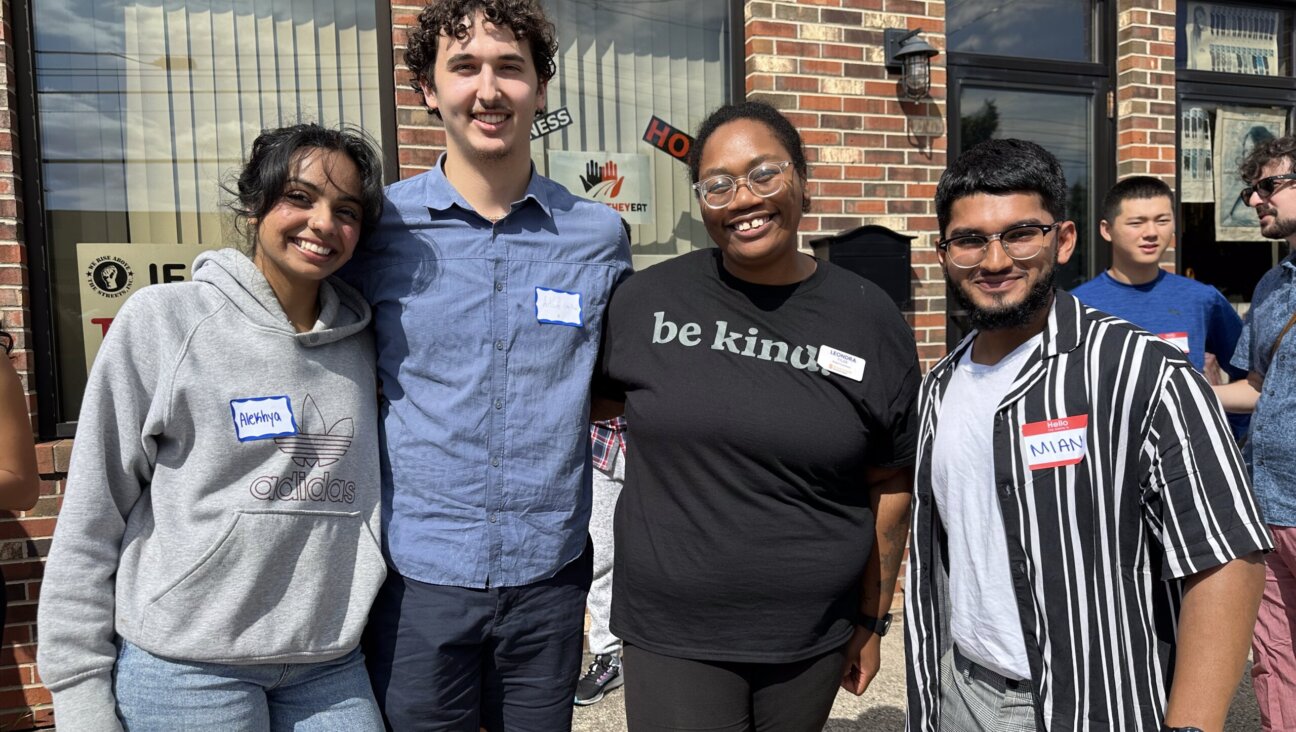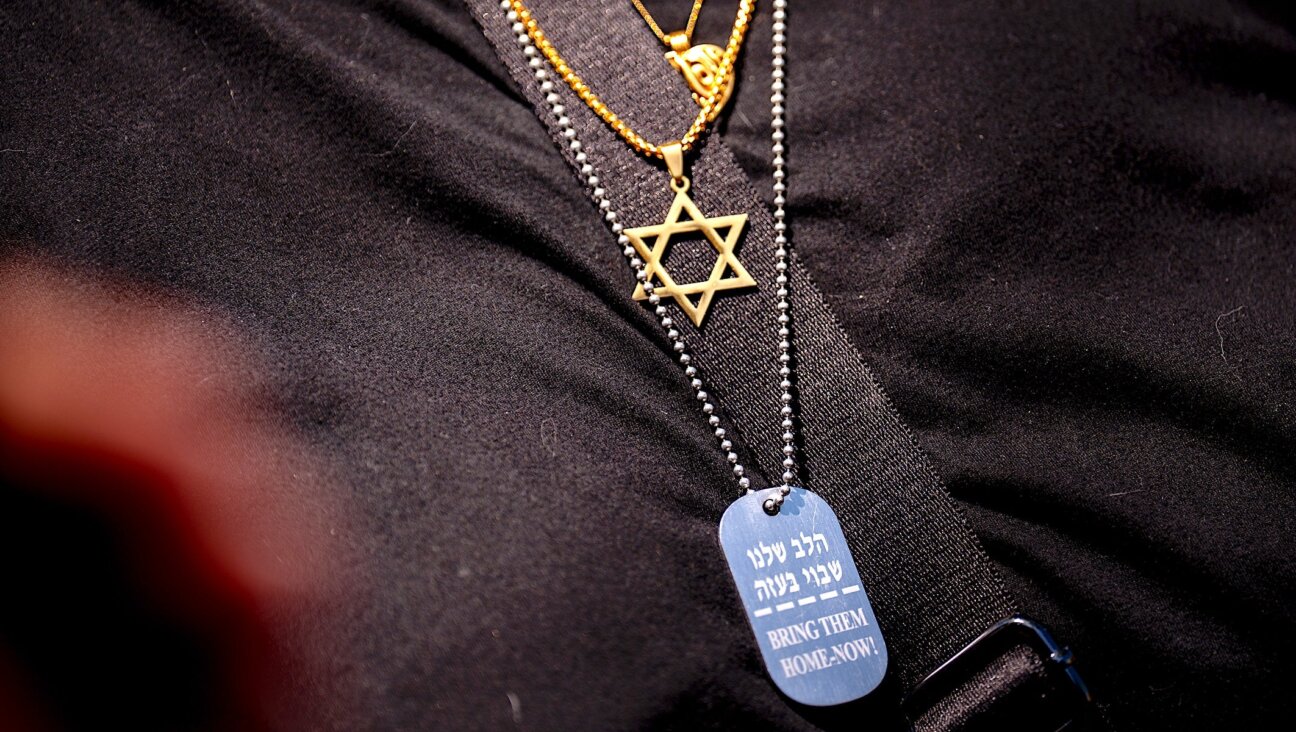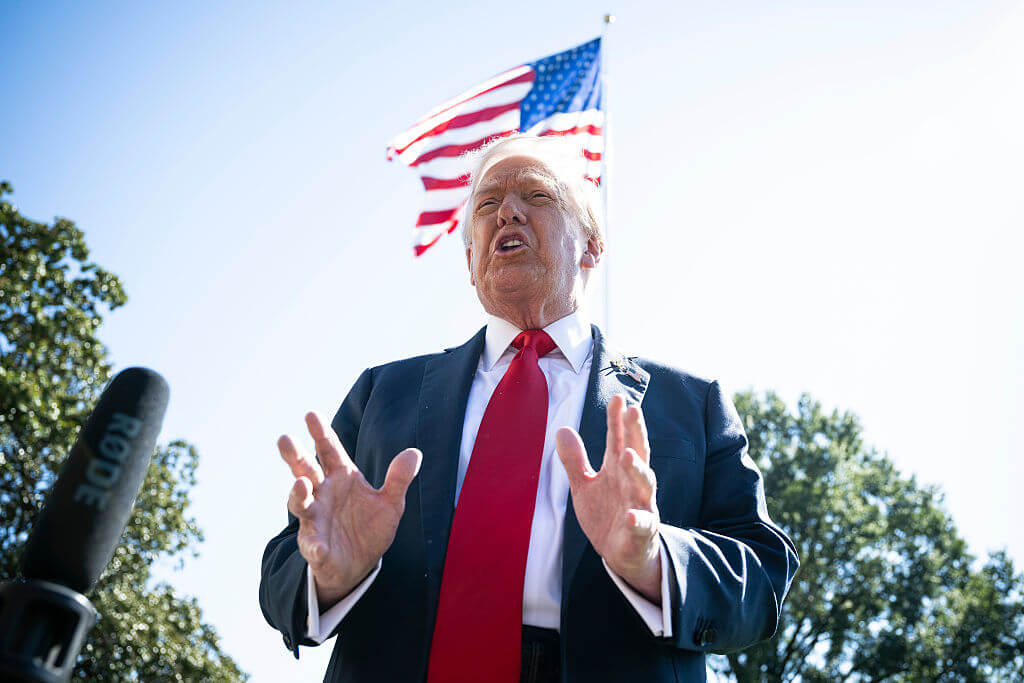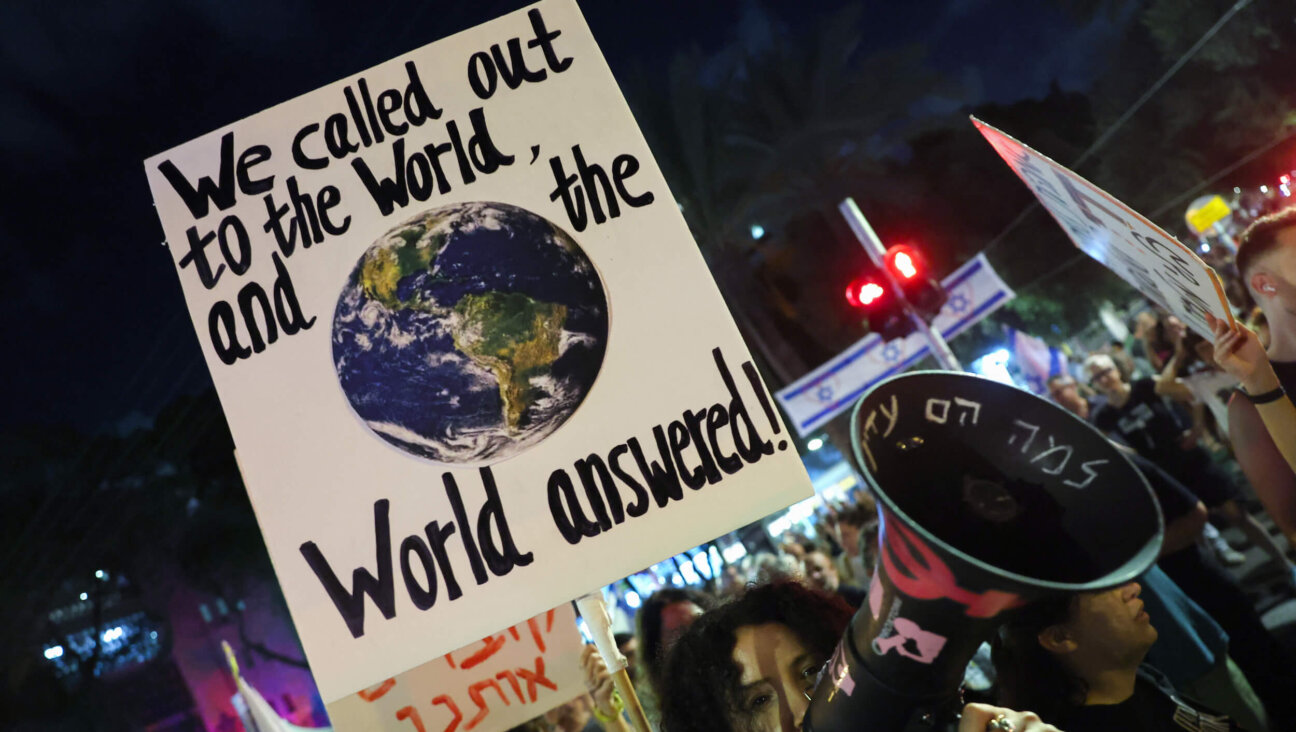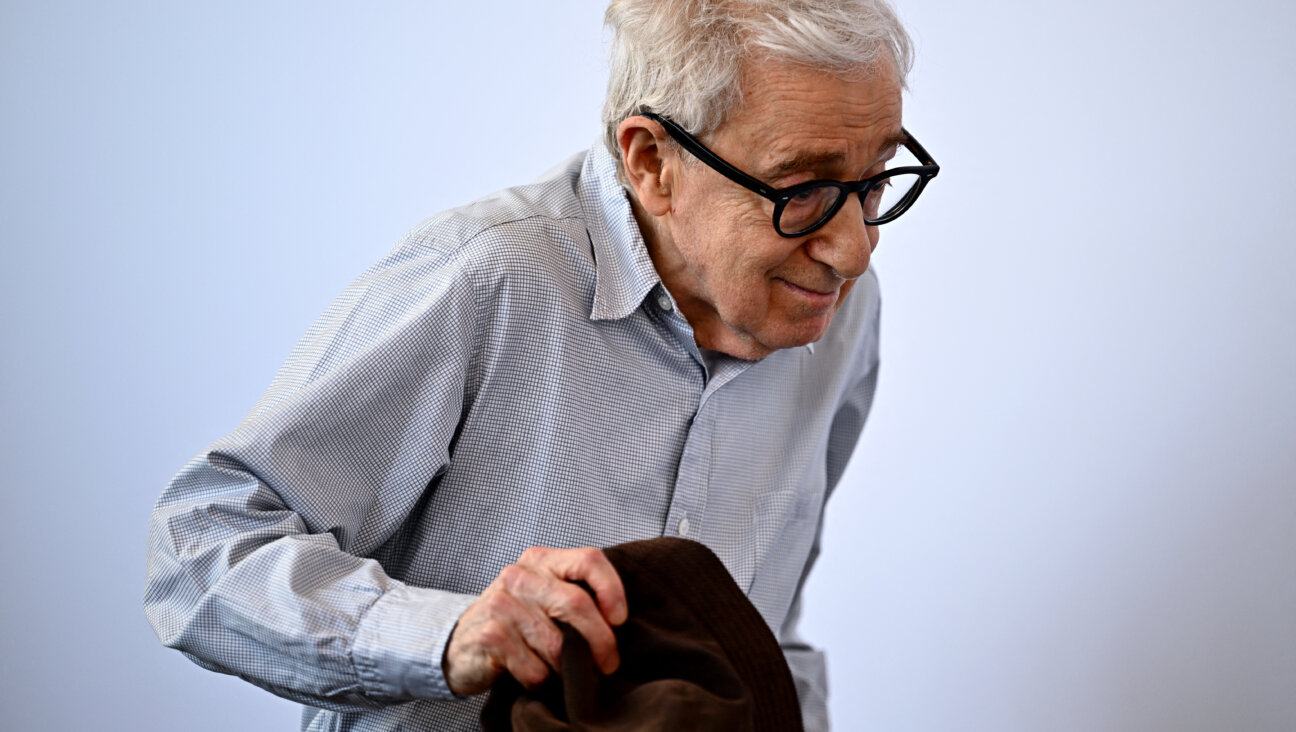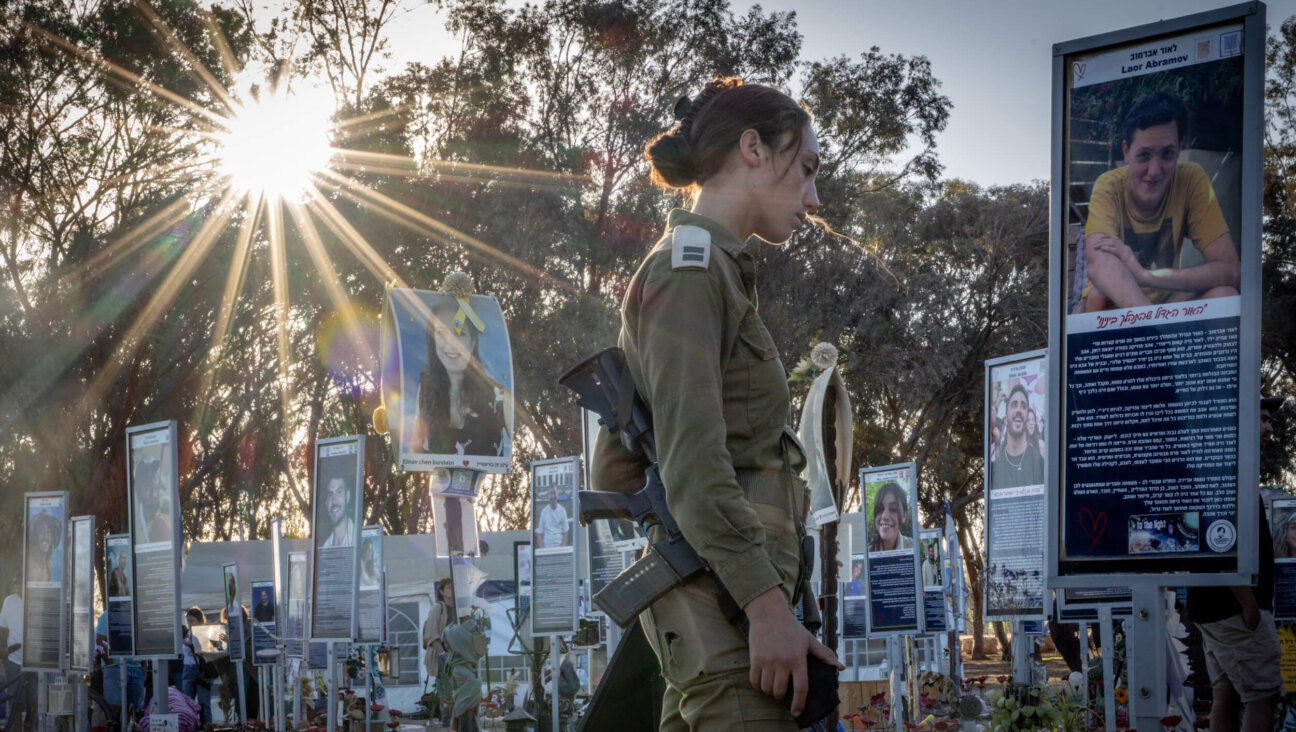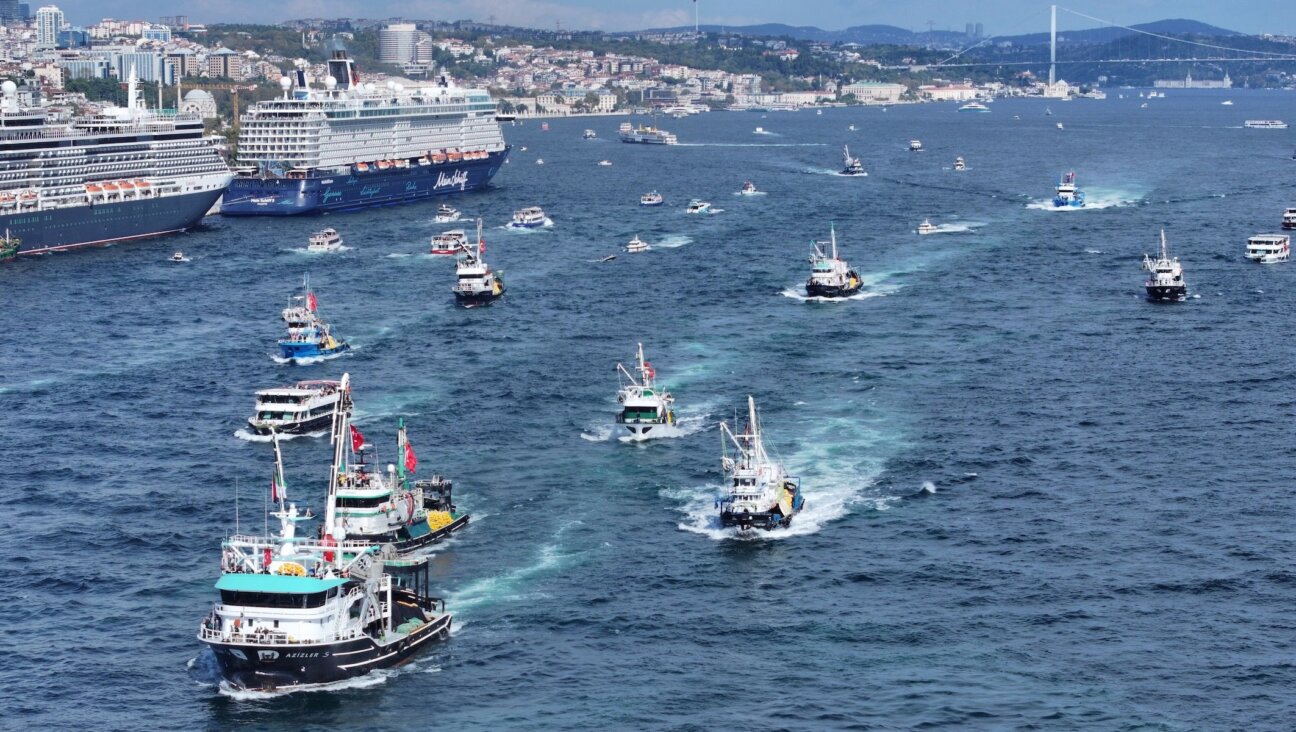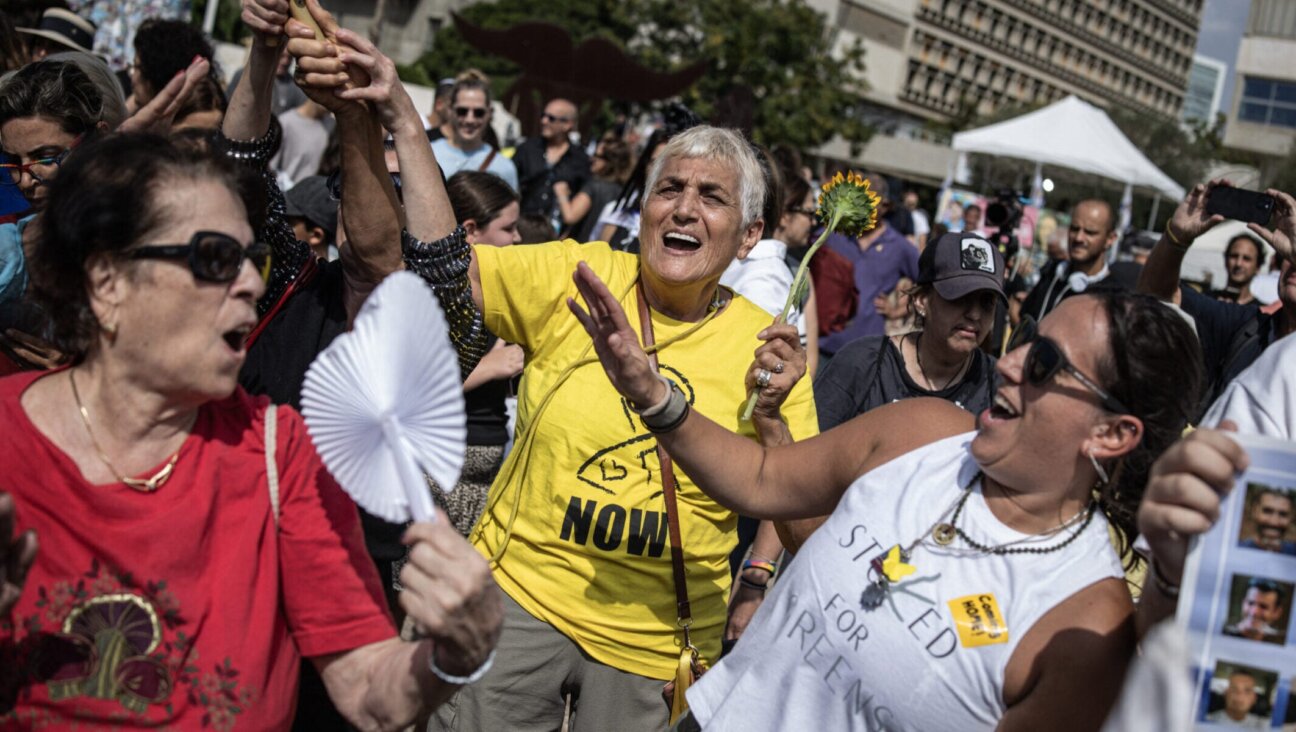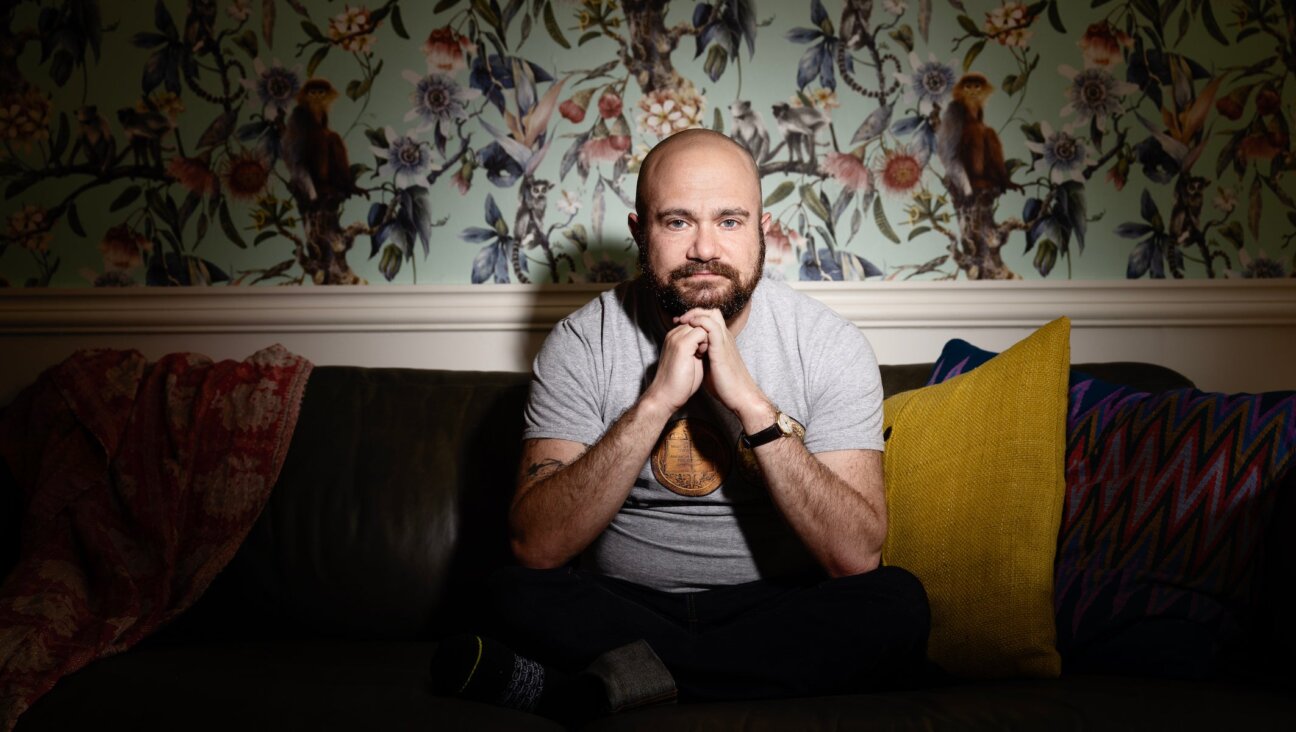Warhol’s Chosen People

Graphic by Angelie Zaslavsky
Sign up for Forwarding the News, our essential morning briefing with trusted, nonpartisan news and analysis, curated by Senior Writer Benyamin Cohen.
Will the irony of New York’s Jewish Museum’s fascinating new exhibition, “Warhol’s Jews: Ten Portraits Reconsidered,” on view through August, be lost on most visitors? Probably. I had commented to a friend that Andy Warhol’s 1980 project, a series of 10 portraits (from photographs) of famous (dead) Jews, looks today like the same rip-off it was when the newly minted works were first shown, at this Jewish Museum and elsewhere: The artist pandering to a Jewish market. My friend corrected me, reminding me that the definition of “rip-off” is “a swindle or exploitation, assuming an unequal relationship between the parties,” whereas this set of works was warmly received by a Jewish art world thrilled to have the attention of superstar Warhol. Given this insight, maybe it was a fair exchange, with the two parties exploiting each other.

Andy Warhol (American, 1928?1987), Sarah Bernhardt from Ten Portraits of Jews of the Twentieth Century, 1980, synthetic polymer paint and silkscreen ink on canvas. Private collection. © The Andy Warhol Foundation for the Visual Arts, Inc./Artists Rights Society, New York/Courtesy Ronald Feldman Fine Arts, New York.

Andy Warhol (American, 1928?1987), Sigmund Freud from Ten Portraits of Jews of the Twentieth Century, 1980, synthetic polymer paint and silkscreen ink on canvas. Private collection. © The Andy Warhol Foundation for the Visual Arts, Inc./Artists Rights Society, New York/Courtesy Ronald Feldman Fine Arts, New York.

Andy Warhol (American, 1928?1987), Franz Kafka from Ten Portraits of Jews of the Twentieth Century, 1980, synthetic polymer paint and silkscreen ink on canvas. Private collection. © The Andy Warhol Foundation for the Visual Arts, Inc./Artists Rights Society, New York/Courtesy Ronald Feldman Fine Arts, New York.
So, after ripening for almost three decades, can we see “Warhol’s Jews” any differently today? Do these portraits really deserve reconsideration?
Yes and no.
Having had so many years to absorb the impact of Andy Warhol on contemporary art worldwide, we have grown accustomed to the ways in which he appropriated iconic pop images (Campbell’s soup cans, Brillo boxes, Jackie O, Elvis, The Last Supper, etc.) and created works that have themselves become icons (and shrewd investments). It’s difficult to stand before a Warhol painting in awe of the artist’s technical skills as a painter. Yet, even in retrospect it’s obvious that here was an artist who not only captured something about the spirit of his times and found ways to convey that in a range of media, but also had an impact on many other artists and on our sensibilities about contemporary art.
That the Jewish Museum latched on to this celebrity phenomenon in 1980 was understandable. The museum’s brief shining moment as a venue to see the most interesting contemporary art (1960s) had long past, and it had not yet assumed its current role as a major locus for a variety of culturally thoughtful projects that have secured for it an important place in the competitive world that is today’s New York museum scene.
This exhibition is, alas, not among those projects, and doesn’t even qualify as a warm stroll down memory lane that comes from familiarity. That’s the problem with Warhol’s choice of Jews, and it’s made ever more evident in the exhibition (and its accompanying book): Most of what gives power to his disconcerting use of iconic images is missing in these portraits. For one thing, these are not immediately arresting and recognizable images of the famous people on view. Visitors ask, “Who’s that?” while looking at Martin Buber or Louis Brandeis, and with the exception of Albert Einstein, there is none of that sense of universal recognition that is so essential a part of Warhol’s tactic. Franz Kafka here looks eerily like a young Ralph Nader, which may have its own appropriate built-in ironies. And Golda Meir may now be remembered as a tough feminist precursor Hillary, but image-wise? Well, let’s just say she’s no Jackie. As it turns out, this collaborative project — on which art dealer Ronald Feldman worked with the artist to select Jews to be included — missed out on that most essential Warhol quality: iconic power.
This list tells us something about the cruelty of fame (one of Warhol’s eternal themes), as we get to ponder potential tradeoffs: Maybe Ben-Gurion would’ve been better than Golda Meir? Aaron Copeland instead of George Gershwin? Trotsky instead of Brandeis? Anne Frank instead of Gertrude Stein? These were tough calls then, and they’re still tough calls, because in Warhol’s art, “fame” assumes immediate viewer recognition. Richard Meyer’s essay, in the illustrated book that accompanies the exhibition, discusses the absorbing (if strange) circumstances surrounding the creation of this group of portraits, but never really makes a case for their importance in the artist’s oeuvre, or for their potential role in history of “Jewish art” (whatever that may be).
Nevertheless, there is virtue here: The exhibit merits serious attention for the reconsideration of one’s own relationship to these questions that it offers.
The “drawings” (a generous term in this context) for these paintings and prints demand that we consider issues of appropriation. Looking at the variations between paintings and prints makes us wonder whether slight changes have any significant meaning, as such things generally do in more traditional art: Were these decisions aesthetic or chance, or dictated by Feldman? It’s also worth viewing the museum’s small accompanying exhibition, “Art, Image, and Warhol Connections” — including works by Ben Shahn, Alex Katz, Deborah Kass and others — which reminds us that, even if they’re not in these portraits of dead Jews, Warhol’s resonance and impact are not easily ignored.
Tom Freudenheim is a retired museum director who writes about art and museum issues.

